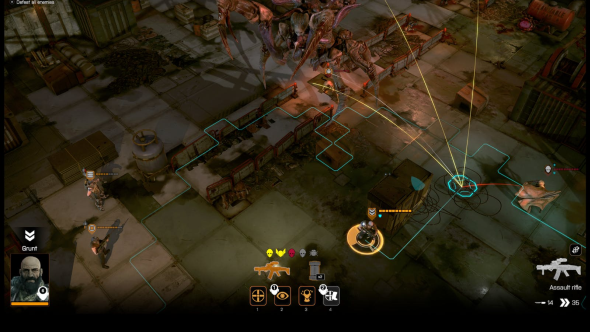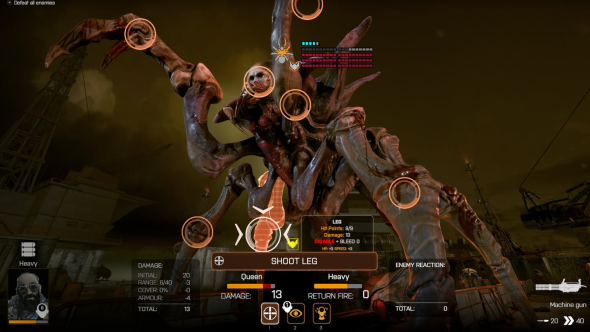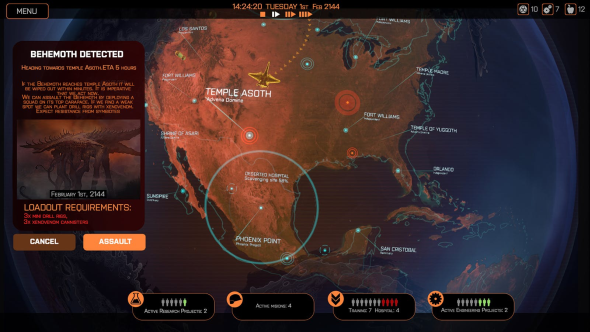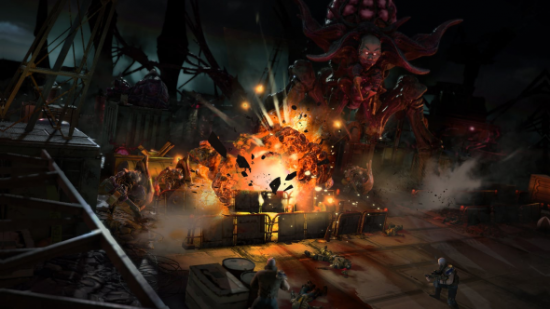It’s customary for developers behind reboots to voice their respect for the creators who came before them, loudly and repeatedly. But it’s far rarer to hear the sentiment echoed back.
Read more: the best strategy games on PC.
You can still watch the footage from 2013’s GDC and see, in real-time, the moment when X-Com creator Julian Gollop tells Firaxis’ Jake Solomon that he’s done a tremendous job with the remake of his original game. “Oh my god,” Solomon intones, eyes locked forward to camera, as though meeting Gollop’s gaze will somehow break the spell. “I’m going to quit. I’m going to hang up my shoes.”
Perhaps the greatest tribute Gollop could pay Solomon and the 2012 XCOM team is yet to come, however, in the form of Phoenix Point. It’s one thing to be nice to your peers on camera – quite another to lift their interface and cinematic camera for your new game.
“I cannot deny that we are influenced by the enormous success of Firaxis’ fantastic reimagining of X-Com,” Gollop says. “The new XCOM has tremendous presentation, really nice character customisation, a wonderful action cam. We are obviously going to incorporate those modern innovations into our game, and we’re going to have destructible terrain, like in XCOM 2.”
It’s taken Gollop two decades to find the funding and support to tackle the X-Com formula again – through a combination of Fig backing and profits from his most recent game, Chaos Reborn. And now that it’s happening, he recognises that Firaxis have set a new standard for the genre.
“You have to remember that the original X-Com was released in 1994, aeons ago,” Gollop says. “Obviously a lot has progressed, not just in terms of graphics, but in usability and how games teach players.”
The original X-Com, he points out, came with a chunky manual, and an equally heavy text description of how to play the game. Phoenix Point, by contrast, will be born into a world where Firaxis have figured out ways to make turn-based tactics more presentable and accessible.
“But actually,” Gollop adds, “the underlying mechanics are still drawing from the original 1994 game.”
Sometimes these mechanics are pretty much invisible. Take movement as an example. In X-Com you spent time units: two for moving straight, four for kneeling down, or five to take a snapshot (the attack from which Gollop’s new studio, Snapshot Games, takes its name). Taking a turn was an act of addition.

Modern XCOM did away with all that, in favour of a simplified move-and-shoot system. For better or worse, it made standing in front of an armed alien like a lemon with a poor grasp of maths a far rarer occurrence.
Phoenix Point’s system looks very much like the latter, but Gollop describes it as a “hybrid” – not exposing action points to the player, but doing the maths on the quiet. Pick up a sniper rifle, for example, and you won’t be able to move as far as a soldier with a handgun – since the game factors in the extra time spent aiming the weapon.
“One significant difference is that we will use a more realistic ballistic system for our projectiles and bullets, which is more similar to the 1994 X-Com,” Gollop notes.
What he’s getting at is one of the more particular quirks of ‘90s turn-based tactics: aimed shots. Emblematic of a genre in thrall to simulation, the memory of limb-targeted attacks looms large, literally, in Phoenix Point.

“Some monsters are as big as a house,” Gollop explains. “You’ve got to know which bit you want to target. Because our aliens are mutants that have constantly evolving systems, each time you encounter a new mutation you have to think a little bit about how you’re going to tackle it.”
Monster abilities are often locked to targetable body parts: a clawed arm, or an abdomen that spews larvae to “scamper around” the map. You can shoot to disable a specific limb, or perhaps target the head to cause massive bleeding and help cut down a huge hit point total.
“They start developing plenty of tentacles – it can’t be Lovecraft without tentacles,” Gollop says. “There’s a very strong Lovecraft influence, and a sense of this unknown horror.”
That sense of the unknown is key to Gollop’s games: whether in the poker-like bluff of Chaos Reborn’s illusions, or the dread of an unseen enemy in X-Com. For Phoenix Point, it’s manifested in a creeping mist gradually encroaching Planet Earth, bringing barnacled beasts and a mutating virus with it.

Phoenix Point’s greatest unknown, however, is its strategic layer – a deep and involved aspect of the game that Gollop compares to 4X, after playing with similar ideas in Chaos Reborn’s campaign mode.
“Each faction has its own special technologies, traits, and diplomatic relations with each other,” he says. “They have their own objectives, so they’re trying to expand and develop their own Havens. You, as the player have to deal with them, as you would encounter a civilisation in Civilization.”
Whether that idea translates into satisfying strategy remains to be seen. But it’s clear that Gollop has taken something else from Firaxis’ XCOM: new confidence in his design, and in the knowledge that the world wants another X-Com from its originator.
“Around a million in sales, at least, is what we’re aiming for,” he says. “It’s ambitious, but the quality of the game will be very high.”
